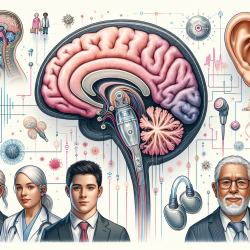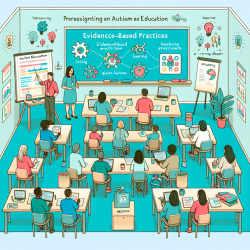Introduction
The study titled "Congenital deafness affects deep layers in primary and secondary auditory cortex" by Berger et al. explores the structural changes in the auditory cortex of congenitally deaf cats. This research provides crucial insights into how congenital deafness impacts cortical layers, particularly the deep layers, which could influence how practitioners approach therapy and intervention strategies for individuals with similar conditions.
Key Findings
The research indicates that while the general cytoarchitectonic pattern of the auditory cortex remains unchanged in congenitally deaf cats, there is a noticeable reduction in the thickness of layers IV to VI in both primary and secondary auditory fields. This suggests that congenital deafness leads to specific structural changes in the auditory cortex, which are not observed in other cortical areas, such as the visual association field.
Implications for Practitioners
For practitioners, these findings highlight the importance of early intervention. The structural changes observed in the study suggest that early cochlear implantation or other forms of auditory stimulation might mitigate some of the dystrophic changes in the auditory cortex. Practitioners should consider the timing of interventions to maximize the potential for auditory development and cortical plasticity.
Encouraging Further Research
While this study provides valuable insights, it also opens up several avenues for further research. Understanding the exact mechanisms behind the observed structural changes could lead to more targeted therapies. Additionally, exploring the potential for cross-modal plasticity and its effects on cortical structure could offer new strategies for rehabilitation in individuals with congenital deafness.
Conclusion
The study by Berger et al. underscores the complex relationship between sensory experience and cortical development. For practitioners working with individuals with congenital deafness, these findings emphasize the need for early and tailored interventions. By leveraging the insights from this research, practitioners can enhance their therapeutic approaches and potentially improve outcomes for their clients.
To read the original research paper, please follow this link: Congenital deafness affects deep layers in primary and secondary auditory cortex.










